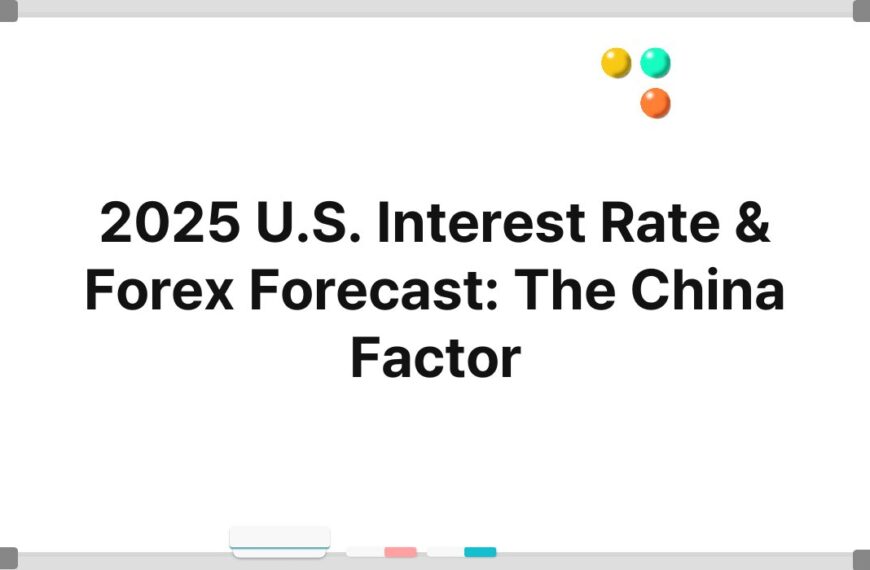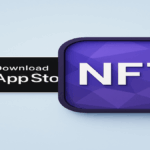[K-Bridge/Samuel] The 2025 U.S.
Interest Rate & Forex Forecast: The China Factor examines the intricate relationship between U.S.
monetary policy, foreign exchange markets, and China’s economic influence.
As the global economy becomes increasingly interconnected, understanding these dynamics is essential for investors and policymakers alike.
The forecast not only considers the potential interest rate changes by the Federal Reserve but also how China’s economic performance could affect the U.S.
dollar and other currencies.
This analysis will provide insights into market trends, potential risks, and opportunities that may arise in the evolving economic landscape.
Understanding the 2025 U.S.
Interest Rate Forecast
The Federal Reserve’s Role in Interest Rate Decisions
The Federal Reserve plays a crucial role in determining U.S.
interest rates, which directly influence economic activity.
By adjusting the federal funds rate, the Fed aims to manage inflation and stabilize the economy.
In 2025, the Fed’s decisions will likely be influenced by various factors, including inflation rates, employment levels, and global economic conditions.
As inflation persists, the Fed may opt for a tighter monetary policy, which could lead to higher interest rates.
This shift could have significant implications for consumer borrowing, investment, and overall economic growth.
Economic Indicators Influencing Interest Rates
Several key economic indicators will shape the Fed’s interest rate decisions in 2025. For instance, the unemployment rate, wage growth, and consumer spending are vital metrics that reflect the health of the U.S.
economy.
A robust job market with rising wages may prompt the Fed to raise interest rates to prevent overheating.
Conversely, a slowdown in economic activity could lead to a more accommodative stance.
Monitoring these indicators will be essential for predicting potential shifts in monetary policy and their impact on interest rates.
Long-term Projections and Market Reactions
Long-term projections for U.S.
interest rates will depend on various scenarios, including geopolitical events and domestic economic performance.
Market participants will closely watch the Fed’s communications and economic forecasts to gauge future rate hikes or cuts.
As uncertainty looms, investors may adjust their portfolios in anticipation of changing interest rates.
Understanding these dynamics will be critical for making informed investment decisions in the forex market.
The Impact of China on U.S.
Interest Rates
China’s Economic Growth and Global Influence
China’s economic performance significantly impacts global markets, including U.S.
interest rates.
As the world’s second-largest economy, China’s growth trajectory influences demand for commodities, trade balances, and investment flows.
A strong Chinese economy can lead to increased demand for U.S.
exports, potentially boosting economic growth and prompting the Fed to raise interest rates.
Conversely, economic slowdowns in China may dampen global demand, impacting U.S.
economic prospects and interest rate decisions.
Trade Relations and Monetary Policy
The trade relationship between the U.S.
and China is another critical factor affecting interest rates.
Trade tensions can lead to uncertainty in the markets, influencing the Fed’s monetary policy decisions.
For instance, tariffs and trade barriers may disrupt supply chains, increasing costs for U.S.
businesses.
This situation could prompt the Fed to adopt a more cautious approach to interest rate hikes, as economic stability becomes a priority.
Understanding the nuances of this relationship is vital for anticipating changes in U.S.
monetary policy.
Currency Fluctuations and Interest Rate Correlation
China’s currency, the yuan, also plays a significant role in the forex market and U.S.
interest rates. A weaker yuan can make U.S.
exports more expensive, potentially leading to trade imbalances.
In response, the Fed may consider the implications of currency fluctuations on inflation and economic growth when deciding on interest rates.
This correlation highlights the importance of monitoring China’s currency policies and their impact on the broader economic landscape.
Forex Market Dynamics in 2025
Currency Pairs to Watch
In 2025, certain currency pairs will be essential for forex traders to monitor, particularly those involving the U.S.
dollar and the Chinese yuan.
The USD/CNY pair will be a focal point, as shifts in interest rates and economic performance in both countries will directly influence its movements.
Additionally, pairs like EUR/USD and GBP/USD will also be affected by U.S.
interest rate changes, as global investors adjust their strategies based on anticipated monetary policy shifts.
Volatility and Trading Strategies
The forex market is known for its volatility, especially during periods of significant economic changes.
As U.S.
interest rates fluctuate in response to economic indicators and China’s performance, traders must adapt their strategies accordingly.
Implementing risk management techniques and staying informed about market trends will be crucial for navigating potential volatility.
Understanding the broader economic context will enable traders to make more informed decisions and capitalize on market movements.
The Role of Speculation
Speculation plays a significant role in the forex market, particularly regarding interest rate expectations.
Traders often position themselves based on anticipated changes in monetary policy, leading to fluctuations in currency values.
As the Fed signals its intentions for interest rates, speculative trading may increase, impacting exchange rates.
This dynamic underscores the importance of analyzing economic data and Fed communications to anticipate market movements effectively.
The Interplay Between Interest Rates and Inflation
Inflation Trends in the U.S.
Inflation remains a critical factor influencing U.S.
interest rates.
In 2025, the Fed will closely monitor inflation trends and adjust its monetary policy accordingly.
Rising inflation may prompt the Fed to increase interest rates to curb price growth, while low inflation may lead to a more accommodative stance.
Understanding the relationship between inflation and interest rates is essential for anticipating future monetary policy decisions.
Global Inflationary Pressures
Global inflationary pressures, particularly from China, can also impact U.S.
interest rates.
If inflation rises significantly in China due to supply chain disruptions or increased demand, it may lead to higher prices for imported goods in the U.S.
This situation could prompt the Fed to consider tightening monetary policy to combat inflation.
Monitoring global inflation trends will be crucial for understanding potential impacts on U.S.
interest rates.
The Phillips Curve and Economic Theory
The Phillips Curve illustrates the inverse relationship between unemployment and inflation, suggesting that lower unemployment can lead to higher inflation.
In 2025, the Fed may consider this relationship when formulating interest rate policies.
If unemployment rates remain low while inflation rises, the Fed may opt for higher interest rates to maintain price stability.
Understanding this economic theory will provide insights into the Fed’s decision-making process.
Investor Sentiment and Market Psychology
The Influence of Market Sentiment
Investor sentiment plays a vital role in shaping market dynamics, particularly in the forex market.
As expectations regarding U.S. interest rates shift, trader sentiment can influence currency values.
Positive sentiment toward the U.S.
economy may lead to increased demand for the dollar, while negative sentiment may have the opposite effect.
Understanding market psychology will be essential for anticipating currency movements in response to economic developments.
Behavioral Finance in Forex Trading
Behavioral finance highlights the psychological factors that influence investor decisions.
Traders may react irrationally to news and economic data, leading to volatility in the forex market.
As interest rate expectations fluctuate, understanding the psychology behind trading decisions can help investors make more informed choices.
Recognizing common behavioral biases will be crucial for navigating the complexities of forex trading in 2025.
The Role of News and Information
In the age of information, news plays a significant role in shaping market perceptions.
Traders must stay updated on economic indicators, geopolitical events, and central bank communications to make informed decisions.
Rapid dissemination of information can lead to swift market reactions, emphasizing the importance of timely analysis.
Understanding how news impacts investor sentiment will be critical for successful forex trading strategies.
Geopolitical Risks and Their Effects
Geopolitical Tensions and Economic Implications
Geopolitical tensions, particularly between the U.S.
and China, can significantly impact economic stability and interest rates.
Trade disputes, military conflicts, or diplomatic crises may lead to market uncertainty, prompting the Fed to adopt a more cautious approach to interest rates.
Investors must remain vigilant regarding geopolitical developments and their potential implications for U.S.
monetary policy.
The Impact of Global Events on Forex Markets
Global events, such as elections, natural disasters, or economic crises, can create volatility in forex markets.
These events may influence investor confidence and lead to sudden shifts in currency values.
Understanding the interconnectedness of global events and their impact on U.S.
interest rates will be essential for forex traders in 2025. Staying informed about potential risks will enable investors to navigate market fluctuations effectively.
Risk Management Strategies
Given the potential for geopolitical risks to impact interest rates and forex markets, implementing robust risk management strategies is crucial.
Traders should consider diversification, hedging, and setting stop-loss orders to mitigate potential losses.
Understanding the broader economic landscape and being prepared for unexpected developments will enhance the resilience of trading strategies in a volatile environment.
Conclusion: Preparing for 2025
In summary, the 2025 U.S.
Interest Rate & Forex Forecast: The China Factor highlights the intricate relationship between U.S.
monetary policy, China’s economic performance, and the forex market.
By understanding the factors influencing interest rates, including inflation trends, geopolitical risks, and market sentiment, investors can better navigate the complexities of the financial landscape.
As we approach 2025, staying informed and adaptable will be essential for seizing opportunities and managing risks in an ever-changing economic environment.








